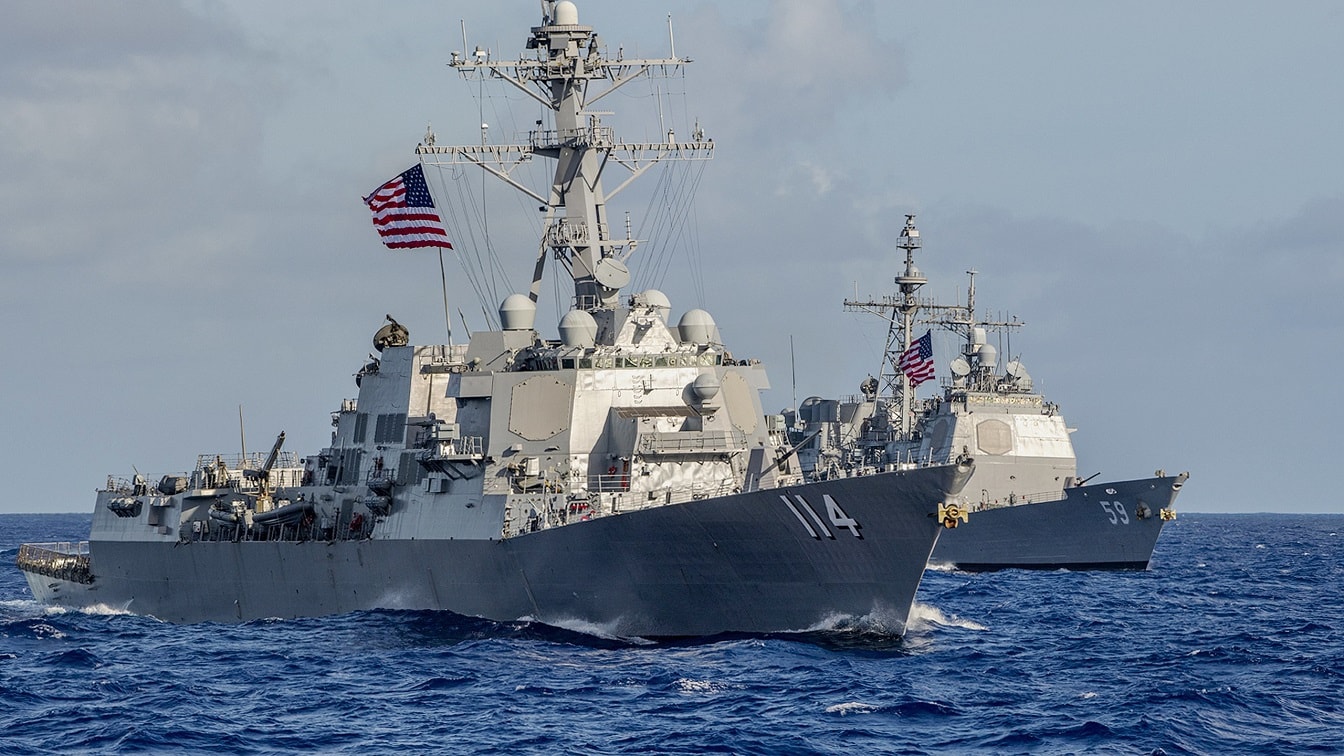The United States Navy has a serious problem – some of its warships are becoming holes in the water in which taxpayer money is being thrown. On the high end, it could cost $1.5 billion for the dismantling of the former USS Enterprise (CVN-65), the world’s first nuclear-powered aircraft carrier.
In addition, the service has already begun to retire some of its Littoral Combat Ships (LCS) even as the two prime contractors are still building new ones. The LCS program remains an example of vessels that the Navy doesn’t want, yet lawmakers refuse to allow the program to be scuttled.
Then there is the USS Vicksburg (CG-69), a Ticonderoga-class guided-missile cruiser that has sat idle at a shipyard in Norfolk, Virginia for years – undergoing repairs that have already cost hundreds of millions of dollars. Yet, at this point, U.S. Navy officials have noted the 567-foot-long cruiser is unlikely to return to sea, as it is one of the 11 vessels that the service would like to see retired.
As with the LCS program, members of Congress may not let it happen.
Lawmakers Fighting With the Navy
This isn’t entirely about national security, rather is about job security in the districts of some U.S. lawmakers. In the case of the USS Vicksburg, the Navy has already spent $175 million on its contract with BAE Systems to modernize and repair the cruiser – even as it is on the list of warships that the Navy would like to retire.
“I’m sure most taxpayers look at the situation and say, ‘No, this is not acceptable,'” Diana Maurer, the director of defense capabilities and management for the Government Accountability Office, or GAO, told NBC News, which first reported on the story. “Why are we spending money on a ship that was supposed to be modernized, that is not modernized, that is currently not sailing and may never sail again?”
Just last year, the House Appropriations Committee awarded $500 million in contracts to update the Vicksburg, despite the efforts to see her retired. Even Rep. Rob Wittman (R-Virginia), whose district includes the BAE Systems facility, said that while he’s not in favor of the ship being decommissioned, he is resigned to its fate.
“I’m not in favor of it, but I think it’s a fait accompli,” Wittman also told NBC News. “I think it’s one of those courses that we’re going to have to take. It’s a tougher argument to put that much money into that ship where we could take the same amount of dollars and put them into multiple other ships and get more service life out of them.”
A BAE Systems spokesperson said in a statement to the news organization that it will “continue to work under contract with the Navy to achieve its desired outcome for the USS Vicksburg.”
USS Vicksburg, named for the siege of Vicksburg during the American Civil War, was laid down at Ingalls Shipbuilding at Pascagoula, Mississippi, in May 1990 and launched in September 1991. With three decades in service, the warship received numerous awards including the NATO Medal for service in Yugoslavia, the Global War on Terrorism Service Medal, and the Battle Effectiveness Award with E device.
Not Fixing Other Ships?
As the Navy was forced to repair the Vicksburg, it was decided to decommission a warship that cost $362 million to build, after it served fewer than five years. Its run at sea was at least two decades shorter than expected. The USS Sioux City (LCS-11), a Freedom-variant littoral combat ship, was decommissioned in Mayport, Florida, on Aug. 14.
As previously reported, USS Sioux City did need a repair to its “combining gear,” which yoked its diesel and gas-turbine engines to the drive train for maximum speed. This has been a class-wide problem, and the fix was only going to cost the U.S. Navy $4-5 million, while the vessel was already slated for an upcoming yard period.
While it may have made sense not to repair Sioux City, it makes absolutely no sense to decommission an LCS while others are still set to be commissioned!
A Numbers Game
In addition to the jobs, some lawmakers are calling for the U.S. Navy to maintain a high number of ships as a deterrent to China – but critics counter that a fleet of unreliable and antiquated vessels is hardly a deterrent, and worse would be essentially useless in a shooting war.
China’s People’s Liberation Army Navy currently has already 340 ships.
The U.S. Navy does have a goal of 355 ships, yet it has maintained a fleet of just 270 to 300 warships since 2003. The USS Vicksburg is thus on the Navy rolls, at least on paper for what that’s worth!
The bigger problem may be that the United States Navy will be forced to spend millions or more on older ships, like the USS Enterprise, even after those warships are retired. How can the Navy possibly reach its goal if has so many holes in the water that are simply wasting money?
Author Experience and Expertise
A Senior Editor for 19FortyFive, Peter Suciu is a Michigan-based writer. He has contributed to more than four dozen magazines, newspapers, and websites with over 3,200 published pieces over a twenty-year career in journalism. He regularly writes about military hardware, firearms history, cybersecurity, politics, and international affairs. Peter is also a Contributing Writer for Forbes and Clearance Jobs. You can follow him on Twitter: @PeterSuciu.
From the Vault

